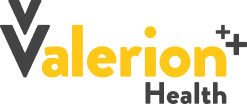
The future of medical coding is promising and today there is an increasing demand for professional medical coders and billers. Medical coding makes it easier to report and track thousands of medical services, quantities of injectable drugs, their supplies, etc. Additionally, it has the potential to standardize healthcare representation and language. These include numerous acronyms, descriptions, names, procedures and eponyms for every disease.
The growing demand for standardization is increasing the scope of coding-based jobs. Let us take you through some of the top trends in the medical coding industry and shed some light on critical market segmentation.
Contents

The future of medical coding is promising and today there is an increasing demand for professional medical coders and billers. Medical coding makes it easier to report and track thousands of medical services, quantities of injectable drugs, their supplies, etc. Additionally, it has the potential to standardize healthcare representation and language. These include numerous acronyms, descriptions, names, procedures and eponyms for every disease.
The growing demand for standardization is increasing the scope of coding-based jobs. Let us take you through some of the top trends in the medical coding industry and shed some light on critical market segmentation.
1. Current Trends in Medical Coding
ICD (International Classification of Diseases) has become the largest segment and is expected to grow further
Declining public health and rising diseases around the world have boosted the demand for trained and experienced medical coders who can accurately use ICD codes. Every time a disease is on the rise, it becomes necessary to correctly document its impact. For example, according to the World Health Organization (WHO), cardiovascular diseases are the number one reason for deaths worldwide. They claim approximately 17.9 million lives every year. In this case, the future of medical coding will be affected positively as an increase in cardiovascular diseases will directly boost demand for medical coding solutions.
The implementation of the latest version of ICD codes could set the ground for new trends in medical billing and is likely to play an important role in the standardization of medical coding. The ICD-11 version is currently used in 35 countries and allows member states to translate ICD into their native languages, boosting implementation. This version contains 17,000 unique codes for diseases, death causes and injuries along with 120,000 codable terms. Navigating this complex coding universe on their own can be challenging for healthcare businesses as the task demands precision and accuracy. This implies that the future of medical coding will be full of new opportunities.
2. North America is about to become the biggest market by 2026
According to Global Newswire, the medical coding market in North America could reach $48.35 billion by 2030 making it the largest shareholder in market revenue. At the same time, the USA holds the biggest market share in the North American region owing to factors like growth in chronic diseases and the geriatric population. It will stimulate the growth of the medical coding industry in the region.
3. Telehealth Services have Grown Tremendously in the Past Few Years
Recent surge in telehealth services
The recent pandemic pushed the need for remote healthcare and advancements in technology enabled it. Many patients preferred the idea of getting a doctor’s consultation without having to go down to the center.
The continuity and growth of telehealth services not only allows people to seek help remotely, but it is also a great tool to provide accessibility to people who do not have medical resources nearby.
Navigating telehealth services challenges
The complex regulations and variety of rules are one of the major challenges associated with remote healthcare services. Additionally, correct coding also needs to be updated regularly to meet documentation requirements.
4. Inclination Towards Value-based Reimbursement
Transition to value-based care
Traditionally, the Fee-for-Service (FFS) model compensated healthcare providers and organizations based on the services provided. But the recent transition to Value-Based Care (VBC) or Value-Based-Payment-System (VBPS) remunerates organizations and providers based on the quality of care they provide rather than quantity.
Impact on medical billing and coding
The transition to VBC affects medical coding and billing too. They need to be updated with all the regulations so they can advise accordingly and minimize their impact on the organization’s revenue cycle.
The coders need to have a meticulous approach to observe the preventive measures and care given to patients. Similarly, billers have to accommodate quality measures and performance metrics to properly gauge the organization’s performance.
5. Importance of Data Security and HIPAA Compliance
Worrying number of data breaches
So far, more than 88 million people have been impacted by private health data breaches in 2023. Over the past four years, the number has increased by a surprising 239%.
Healthcare organizations can protect patient data from potential breaches by complying with the standard laws and regulations.
Why is HIPAA compliance important?
HIPAA (Health Insurance Portability and Accountability Act) compliance is necessary for maintaining patient privacy and data security. The act prevents unauthorized access while mitigating the risk of data breaches. Complying with such acts helps form trust between patients and the organization.
Protecting patient data from unauthorized access
Patient confidentiality is one of the main foundations of the healthcare industry. Any compromise in this area can have serious and long-lasting consequences. One of the first practices to ensure data security for medical coding and billing is to encrypt stored and transmitted data. It can save the patients’ information from unauthorized access.
Regular training of employees on the best industry practices helps them adhere to the guidelines and avoid data breaches. Another good practice would be to limit access to patient data to only those who need it.
What Does the Future Look Like?
Looking at the report’s scope, it is evident that current trends in medical coding are transforming medical services, healthcare diagnosis, procedures and universal medical alphanumeric code equipment. The future of medical coding seems positive considering its use in the current scenario.
The global medical billing outsourcing market also showed positive trends. It reached the value of $12.2 billion in 2022. Interestingly, it is expected to grow at a CAGR of about 12.26% from 2023 to 2030. More and more decision-makers are trusting outsourcing organizations to increase efficiency and productivity.
Partner with Valerion Health and leverage the expertise of seasoned and certified coders to optimize your business operations. Get in touch today.
Share this on

Subscribe now for weekly updates

Improve Your Collection, Reduce Costs and Optimise Your Revenue
Related Posts

Subscribe now for weekly updates
Want to learn more about our solutions?
We would love to hear from you! Tell us how we can help, and we promise to respond within 48 hours.





